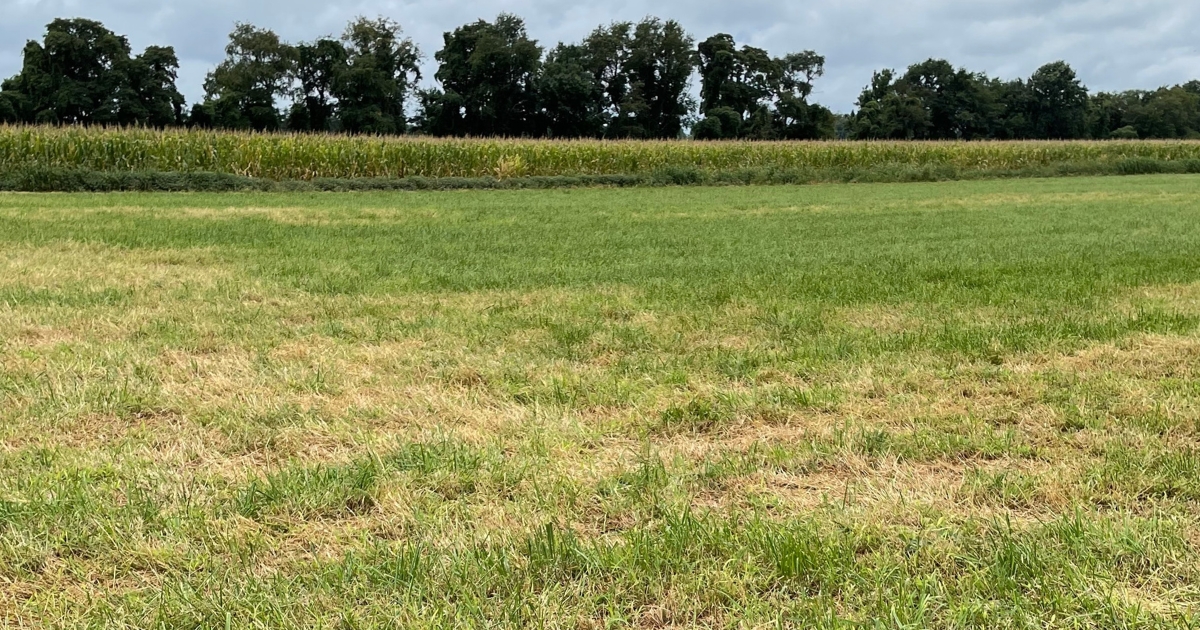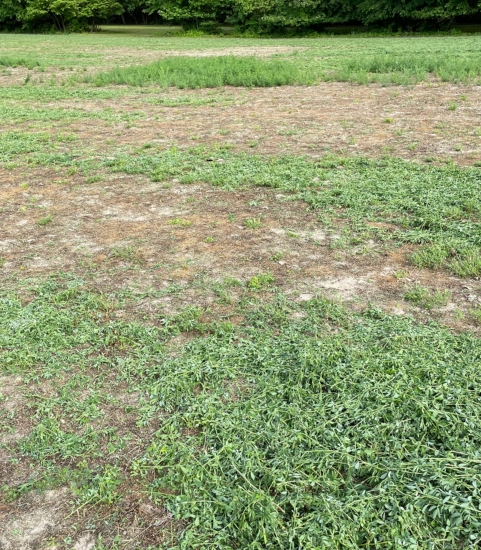
Category: Cooperative Extension

Fall Season Perennial Forage Management
September 21, 2023 Written by Drew Harris, Agriculture Extension Agent
As fall approaches, both alfalfa and grass hay crops need to be properly prepared for the upcoming winter. Hay fields should be thoroughly evaluated in late summer or early fall to determine which issues have potentially damaged the stand. Factors such as disease, weed pressure, insect pests, improper cutting height, heat or drought, poor fertility, and age all significantly impact stand health and persistence.
It is important to understand which factors are causing the loss of stand and whether they are biotic or abiotic stresses. Once identified, proper management techniques to prevent or treat the issue are paramount, and this can help sustain yields and longevity of the crop. When other factors are out of the grower's control from a treatment perspective, this puts greater importance on cultivar selection and resistant traits. Each of these components impact yield, sustainability, and the overall return for the grower.
After negative factors significantly damage a field, it leaves the grower with a wide range of options on how to properly move forward. With the cost of seed and other inputs being so high, it can be extremely difficult to determine whether to terminate a field, interseed or just leave it alone. With alfalfa, it is key to remember that it has autotoxicity, meaning that planting alfalfa into existing alfalfa stands is futile because new seedlings will be unable to establish properly.
First, it is essential to examine the full scope of the lost stand or where perennial or annual weeds have established themselves, taking the place of the original forage setting. Significantly large areas of exposed soil typically create opportunities for several pests, including weeds, to establish themselves and, over time, begin to impact other areas of the field. To best address this problem and lack of uniformity, interseeding in the specific areas where exposed soil is, will help prevent the spread of various weeds. This will also boost yield and quality of the hay if these areas were left alone. This photo shows some very large areas where alfalfa plants have diminished, and interseeding other forage grasses in this area is ideal since they will not be affected by alfalfa autotoxicity.

If larger areas of the alfalfa field are lost, the stand is older than five years, or if stand counts throughout the entire field are below the ideal threshold population, then complete termination would be the optimum choice. To manage alfalfa autotoxicity after complete termination of the field, establishing a low-cost cover crop such as barley for the entire following growing season, not just fall and winter. If alfalfa is replanted too soon after an existing stand is terminated, the continued problem of seedling damage will occur. Tillage of the field will also help speed up this process up, as no-till fields may need more time to eliminate the risk of autotoxicity. When it comes to grass forages, interseeding is a much more viable option than alfalfa. Mixing in new seedlings can help the field retain all the benefits of a well-established stand and maximize profitability for the grower. When the population across the entire field has been diminished, it may be time to look at also termination and replant. When replanting a field of grass forages, herbicide intervals are necessary to follow since residue can damage an emerging stand. Always make sure the planting rate is sufficient with the specific grass or legume being planted, and that mixed pasture seeding rates vary from monoculture forage fields.
Also, utilize the late summer and early fall as a great opportunity to get the needed seedlings established and correct fertility moving into the winter. Spring plantings of various perennial forages, especially grasses, can have difficulty with uniformity in the stand if planted or interseeded in the spring. The most significant risk for fall plantings is drought, so make sure that soil moisture and weather conditions meet the need of a newly reseeded field. Making final cuttings of the year is also important for winter hardiness; do not cut too low and damage the crown where carbohydrates are being stored for the winter. A minimum height of a few inches is key for the longevity of the stand and yield moving into future years.
Finally, calculating removal rates and putting the correct amount of plant nutrients back into the soil for the forage is paramount both in the spring and fall. This helps plants tolerate heat, cold, and drought extremes while making sure that growers are receiving the yields and profitability from the forage crop.
